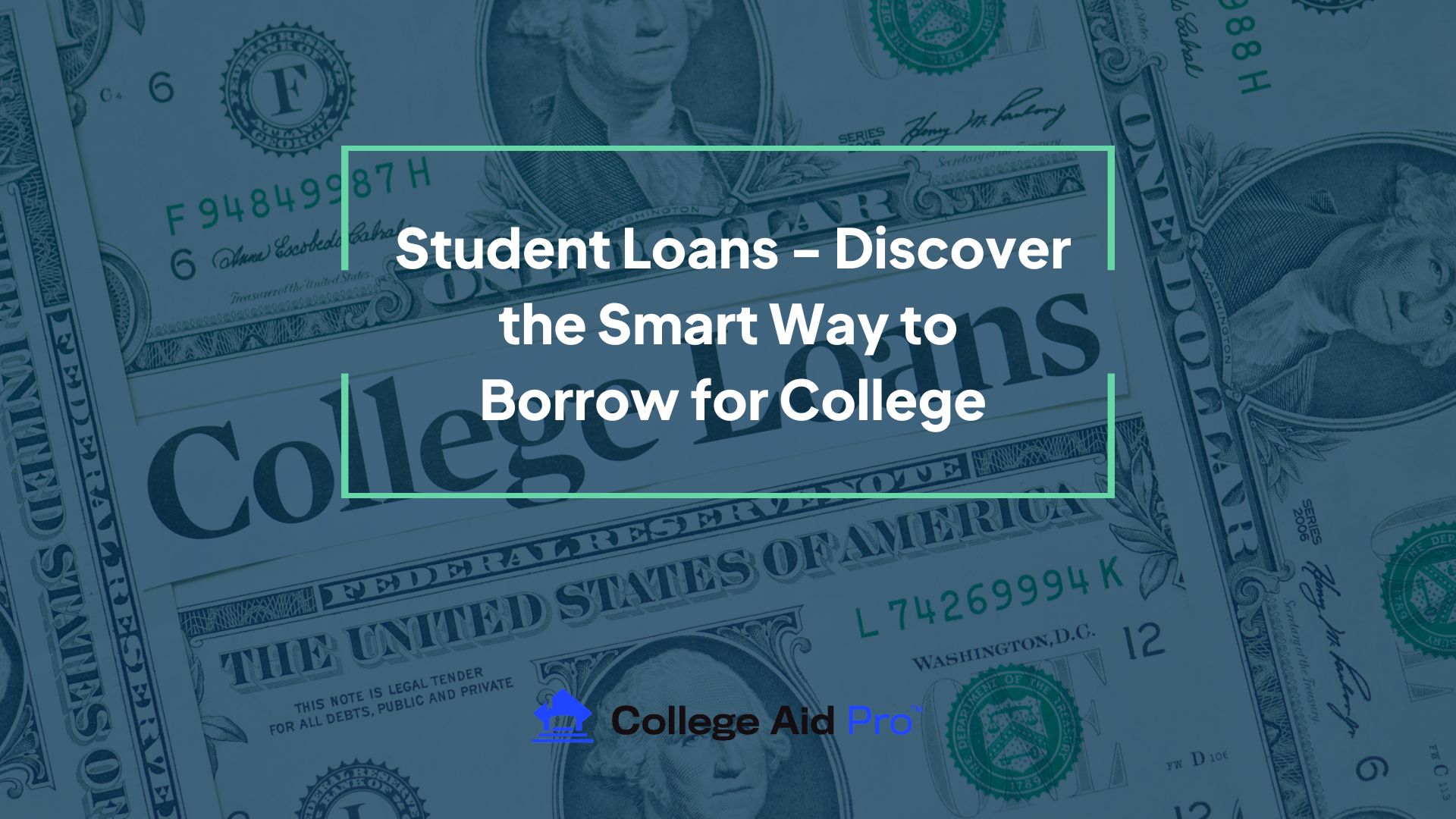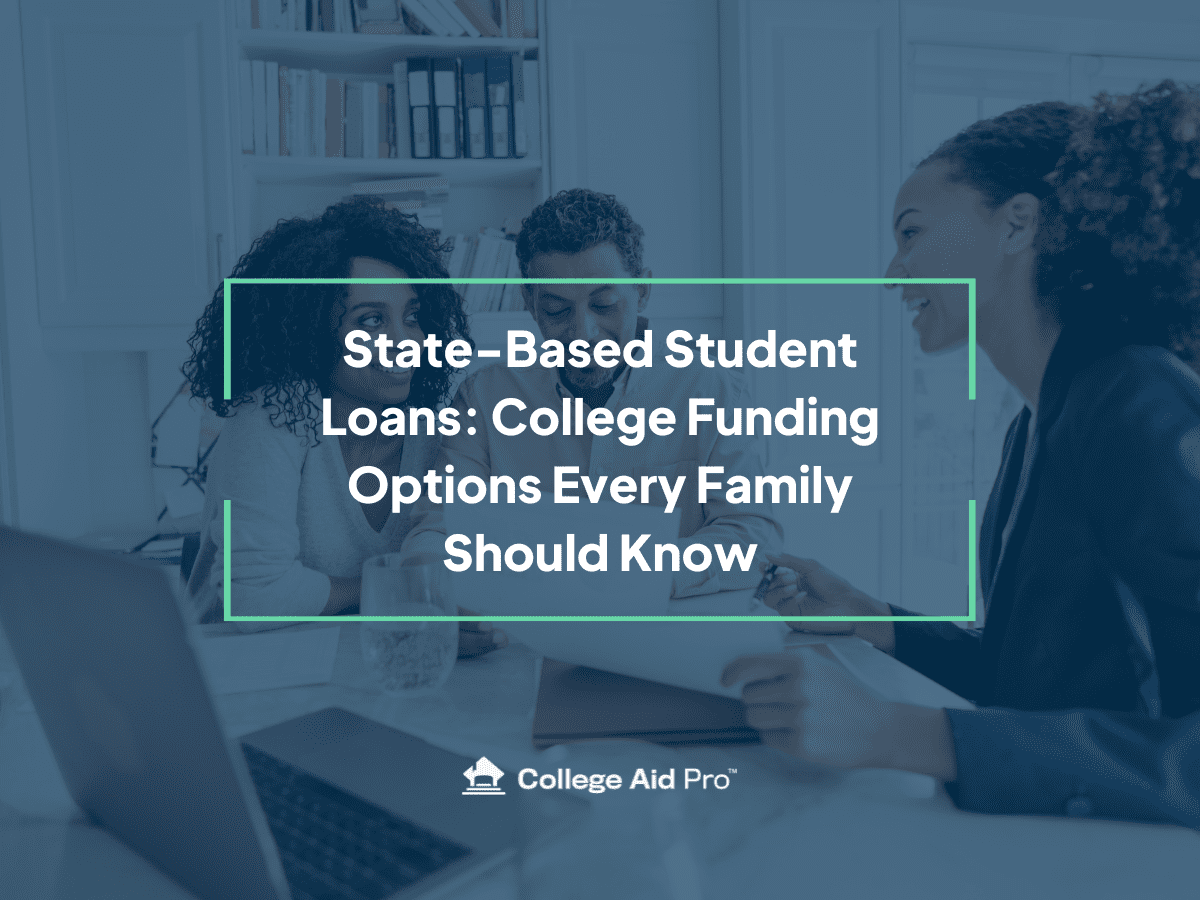Student Loans – Discover the Smart Way to Borrow for College
The Current State of Student Loan Debt in America
As of 2022, there was $1.6 trillion in federal student loan debt alone. Combine that with private student loans and the total debt for higher education tops $1.75 trillion and 45 million American borrowers. WOW!
The federal student loan guarantee programs started more than 50 years ago, in 1965.
Scary stuff! Why has this happened? The increase in tuition is directly related to the free-flowing market of student loans. If I were in the lending business, I would love to have a loan on the books that is not able to be bankrupted.
More often than not, students and parents are forced to take out student loans to help pay for their college costs.
Loans come in two forms – federal and private (bank) – and no matter who you borrow the money from, you will need to repay it with interest so you need to understand the different types of loans and how they work.
Types of Federal Loans
Federal loans typically have lower interest rates and have more flexible repayment options (10 to 25 years); however, the amount you can borrow is limited.
The types of federal loans are Direct Subsidized Loans, Direct Unsubsidized Loans, and Direct PLUS.
Here are some quick facts to help you understand each…
Federal Direct Student Loans
The student loan nearly every family will consider is the Federal Direct Student Loans—subsidized and unsubsidized.
| Subsidized Federal Direct Student Loan | Unsubsidized Federal Direct Student Loan |
| Need based | Not need based |
| Available to undergrad students only | Available to undergrad and graduate students, or professional students |
| US Department of Educations pays interest while in school and during grace period and deferment. | YOU, not the government pay interest while in school, during grace period, and if you defer.
Interest will accumulate and be added to the principal. |
| Grace period of 6 months after you leave school before repayment begins | Grace period of 6 months after you leave school before repayment begins |
| Origination fee – 1.057% | Origination fee – 1.057% |
Who is the Borrower?
The only loan available to the student without a co-signor requirement is the Federal Direct Student Loans—subsidized and unsubsidized.
The 4 year maximum on this program is $27,000. Any borrowing necessary beyond this will either require a parental co-signor (Private Loan) or be solely in the parent’s name ( PLUS Loan).
How Much Can I Borrow?
Both the Federal Direct Student Loans – subsidized and unsubsidized have loan limits based on your student’s grade and dependency. (Dependent students whose parents were denied a Parent PLUS loan can borrow at independent student limits.)
Here is summary of the annual loan limits available under the Federal Direct Student Loans:
| Grade/Year | Dependent Student | Independent Student |
| Freshman | $5,500 (No more than
$3,500 of this may be in subsidized loans.) |
$9,500 (No more than
$3,500 of this may be in subsidized loans.) |
| Sophomore | $6,500 (max. $4,500
subsidized) |
$10,500 (max. $4,500
subsidized) |
| Junior & Beyond | $7,500 (max. $5,500
subsidized) |
$12,500 (max. $5,500
subsidized) |
| Graduate/ Professional
Students |
Not applicable | $20,500 unsubsidized only |
| Cumulative Limit ( 4 year) | $27,000 | $45,000 |
Federal Direct Parent Loans
Direct PLUS Loan:
- Available to graduate or professional students as well as to parents of dependent undergraduate students.
- Parents must be approved with a good credit history.
- Can borrow up to the total cost of attendance less financial aid.
- Repayment for graduate students is deferred until they leave school. Interest accrues and is capitalized.
- Repayment for parents may be deferred if requested.
- Eligible for flexible repayment options, such as graduated and extended repayment plans.
- Loan fee (deducted from disbursement amount) – 4.228% (for loans taken out between 7/1/2025-6/30/2026).
The PLUS Loan has one main advantage: it is relatively easy to qualify for the loan. The vast majority of applicants who have even below-average credit, will qualify.
And even if the borrower has an adverse credit history, they may still be able to get the loan with the participation of a cosigner (called an “endorser” in government terminology). PLUS offers a fixed interest rate (currently 8.94% for the 2025-2026 school year and an origination fee of 4.228%.)
The annual loan limit for a parent PLUS loan is the full cost of attendance at the college or university, minus all other sources of financing like direct loans, grants, scholarships. To be eligible for this type of federal loan, the Free Application for Federal Student Aid (FAFSA) must be submitted.
Divorced parents of dependent students can each take out a parent PLUS loan for their child, as long as they sign separate master promissory notes (MPNs) and the loans together do not exceed PLUS loan limits.
More information about federal loans is available from the Federal Student Loan website.
What’s going on with Interest Rates?
Here is a new schedule of rates for Federal Direct loans:
| Federal Student Loan Types | Interest Rates
7/1/21 – 7/1/22 |
Interest Rates
7/1/22 – 7/1/23 |
Interest Rates
7/1/23 – 7/1/24 |
Interest Rates
7/1/24 – 7/1/25 |
Interest Rates
7/1/25 – 7/1/26 |
| Direct Subsidized | 3.73% | 4.99% | 5.5% | 6.53% | 6.39% |
| Direct Unsubsidized – Undergrad | 3.73% | 4.99% | 5.5% | 6.53% | 6.39% |
| Direct Unsubsidized – Grad | 5.28% | 6.54% | 7.05% | 8.08% | 7.94% |
| Direct Parent PLUS | 6.28% | 7.54% | 8.05% | 9.08% | 8.94% |
What About Private Loans?
Private loans are made by banks and financial institutions and is the most rapidly growing section of education loans because the loan amount you can borrow is not limited.
Students and parents should only consider a private loan after they have maxed out all the Federal Direct Student Loans – Subsidized and Unsubsidized money available to them. Interest rates, loan fees, and repayment terms can vary immensely.
While access to the federal parent PLUS loans is important for many families, getting a private parent loan from a bank or lending institution may make more sense for parents, as the cost of borrowing could be lower than PLUS.
Private parent loans will require the borrower to pass a relatively stringent credit test. Borrowers generally need to have a credit score of 680 or higher, and a total resulting debt-to-income ratio (all monthly debt payments divided by all monthly gross income) not to exceed 35-40%.
Actual credit requirements will vary among lenders. Currently, no private parent loan products have any fees attached to them and the FAFSA does NOT need to be submitted.Parents, you also need to be aware in many cases you will be required to be a co-signor on your student’s loan to obtain a competitive rate. Ultimately these loans could become your responsibility if your student is unable to repay them.
Below are the steps we recommend to find the best loan option & lowest rate:
Step 1: Maximize Federal Direct Student Loans
These loans offer lower rates and better terms, with freshmen eligible to borrow up to $5,500. This is the only student loan that doesn’t require a co-signer.
Step 2: Apply through College Ave to get your rate.
- Apply in 3 Minutes
- Soft Credit Pull
- Reputation for rewarding high FICO scores
Step 3: Apply through Sofi Student Loans to get your rate.
- Apply in minutes
- Soft Credit Pull
- Reputation for rewarding high FICO scores
Step 4: Apply through Ascent Student Loans to get your rate
- Apply in minutes
- Soft Credit Pull
- Updated Lowering Pricing/Rates as of July 1, 2025.
Step 5: Compare your private rates to Federal PLUS & State Programs (Massachusetts , Rhode Island, Iowa)
Follow these steps above and you’ll get a view of the loan rates and terms available to your family so you make an informed, thoughtful borrowing decision.
Click here to Compare All Private Loan Rates.
Our Soap Box
After working with hundreds of families over the years, please allow us to get on our soap box. We recommend you estimate your total loan balance and resulting monthly payment for your student’s ENTIRE college career BEFORE deciding on a school. Will the monthly payment be an amount you or your student can afford? Here is a good monthly payment calculator you can use to compare your loan options. As a rough estimate for every $10,000 you borrow, your payment will be $100 to $125 per month on the standard 10-year repayment schedule.
Your total balance should never be more than you anticipate making your first year out of college.
Not sure what your student might be earning after they graduate? Check out our MyCAP software. You can choose your intended school and major and software will share average first year salaries, the amount of loans you “may” need to cover the college costs, and if this school fits our affordability profile for you.

We talk so much about the student loan problem, but all the proposed solutions are reactive – after the fact – such as Income Based Repayment, Pay as You Earn, Public Service Loan Forgiveness, etc. We need to shift our way of thinking, America, and take a proactive approach to graduate on time with manageable student loan debt without robbing retirement!



